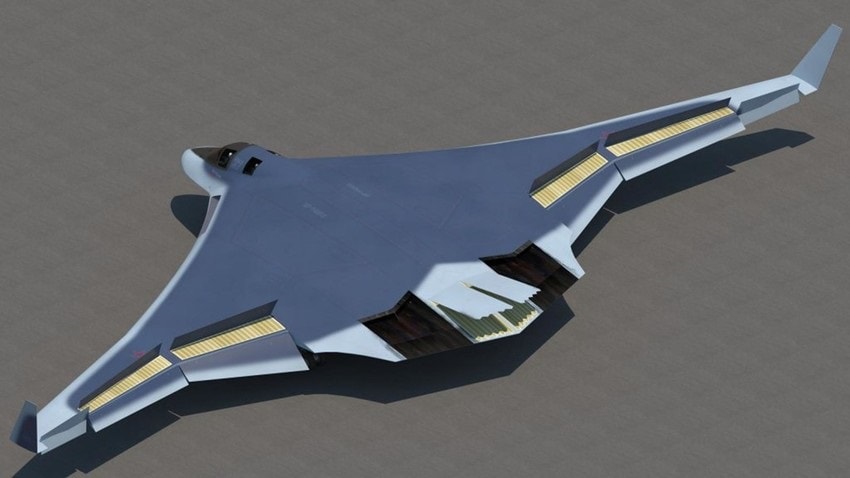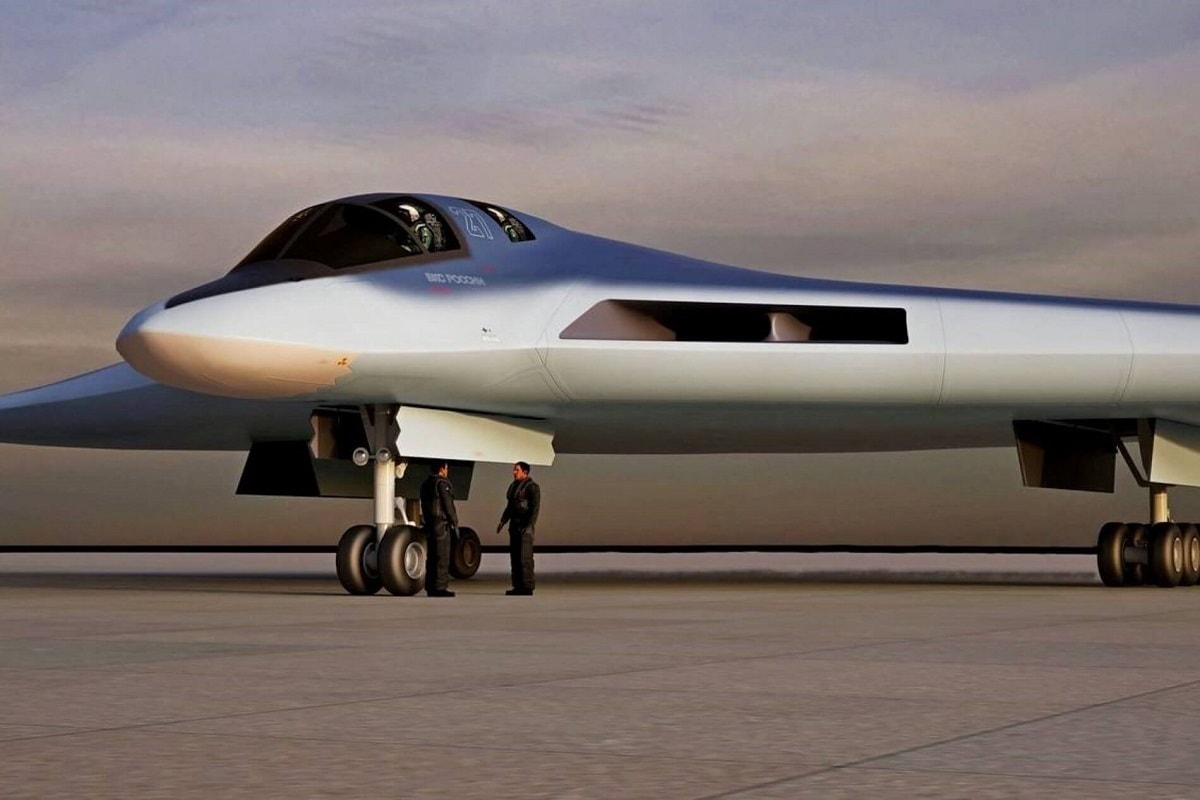
Image: Artist rendition. Creative Commons license.
Last month, the United States Air Force released a new artist rendering of its still-in-development B-21 Raider. The latest images of the heavy bomber came after it was announced in June that the first two Northrop Grumman B-21s had been completed at Plant 42 in Palmdale, California, and would soon be used in testing.
But don’t think for a second America’s adversaries didn’t catch those headlines, as Moscow is getting set for its own potential bomber PR push–and soon.
The Russian military has its very own stealth project in the works and is working on its own long-range bomber. On Monday Tass reported that a demonstration model of the PAK DA aircraft would be assembled before the end of next year, while a new weapon system was also being developed for the ongoing project.
“Currently, the experimental model is being built. The demonstration model will be ready by 2023,” a source in the Russian aircraft industry told Tass. “The subsonic PAK DA will be armed with hypersonic weapons. Besides, its flight will be aided by drones.”
There has been no official confirmation of the information provided to Tass, but in December 2019, Russia’s Deputy Defense Minister Alexey Krivoruchko said in an interview that the design of the PAK DA had been approved and that the Tupolev design bureau had already begun developing working design documentation. In May 2020, a source told Tass that production of the first experimental model of the new strategic bomber had begun.
Codename Poslannik (Envoy)
The Tupolev PAK DA – which in Russian translates to “Prospective aviation complex for long-range aviation” – and codenamed Poslannik (Envoy), is the Russian project to develop its next-generation stealth strategic bomber for the Long-Range Aviation branch of the Russian Aerospaces Forces.
Just as the American-built Northrop Grumman B-21 Raider is meant to replace the B-1 Lancer, B-2 Spirit and B-52 Stratofortress, the PAK DA will eventually replace the Cold War era Tupolev Tu-95 as well as the Tu-160M and Tu-22M3.
Development of the new bomber began in 2008, and according to some early reports was initially based on the Tupolev Tu-160, before then-Prime Minister Vladimir Putin said in a televised address that year indicating that the bomber was an entirely new design.
The Tupolev Design Bureau was awarded a three-year research and development (R&D) contract in September 2009 to undertake studies for a completely original long-range bomber design rather than relying on legacy Soviet concepts.
As previously reported, Russian defense sources revealed last summer that PAK DA’s design had been finalized, following almost a decade of bureaucratic debate and fraught research and development work. Additionally, it was announced that the United Aircraft Corporation (UAC) had begun work on the first PAK DA model, with construction to be completed this year. In December 2020, it was also reported that as many as three PAK DA prototypes were already in production. However, that would seem to contradict this week’s news.
The World in the Crosshairs
Even as questions as to how far along the PAK DA program actually is, experts have touted its potential capabilities.
Unlike the Tu-95 (NATO reporting name “Bear”), the PAK DA will reportedly be able to utilize its hypersonic weapons to strike targets potentially on the other side of the planet, without even leaving Russian airspace.
Earlier this year, Russia Beyond reported that work was continuing on the first full-size prototypes and that the new bomber would be built according to the “flying wing aerodynamic scheme,” thus perhaps not being all that different from the B-21 Raider in profile.
The aircraft would be capable of reaching subsonic speeds of up to 1,190 km/h or 740 mph. That would be slower than the speed of the Tu-160 strategic bomber, but it would employ “intra-fuselage” weapons, which would decrease its radar visibility.
Additionally, if the PAK DA could fire its hypersonic weapons without leaving Russian airspace it certainly wouldn’t need to be the fastest bomber in the world. Now as with every other Russian military program in the works, the question is whether Moscow will actually deliver on the hype, and with enough units to make the project more than just an expensive PR stunt.
Peter Suciu is a Michigan-based writer who has contributed to more than four dozen magazines, newspapers and websites. He regularly writes about military small arms, and is the author of several books on military headgear including A Gallery of Military Headdress, which is available on Amazon.com.

